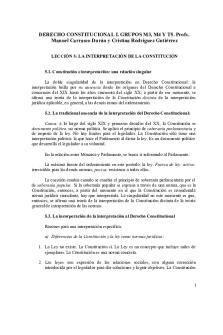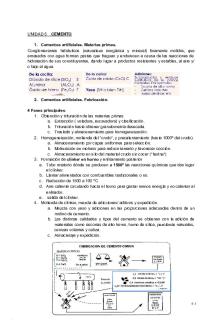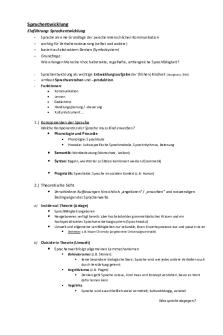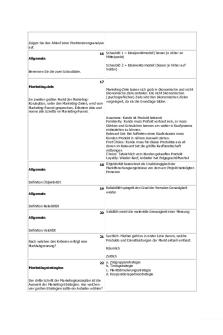5 6060145322183622712 PDF

| Title | 5 6060145322183622712 |
|---|---|
| Course | Financial Accounting and Reporting |
| Institution | Pontifical and Royal University of Santo Tomas, The Catholic University of the Philippines |
| Pages | 30 |
| File Size | 584.5 KB |
| File Type | |
| Total Downloads | 101 |
| Total Views | 921 |
Summary
PAGE 1 CANNON BALL REVIEW PART 2 I. CASH AND CASH EQUIVALENTS a) Cash on hand includes: Currency and coins, Checks and money orders held, Petty cash fund and change fund. Postdated, stale and defective checks are receivables and not cash. The petty cash fund must be fully reimbursed or updated at ba...
Description
PAGE 1
CANNON BALL REVIEW PART 2 I. CASH AND CASH EQUIVALENTS a) Cash on hand includes: Currency and coins, Checks and money orders held, Petty cash fund and change fund. Postdated, stale and defective checks are receivables and not cash. The petty cash fund must be fully reimbursed or updated at balance sheet date. b) Cash in bank includes: Unrestricted bank deposits at their adjusted balance, restricted bank deposits for current use (payroll, dividends and taxes) and restricted bank deposits for liabilities due within 12 mos. c) Funds to be disbursed for the acquisition of noncurrent assets are always classified as long-term investments. d) The adjusted cash in bank will be computed by adding DIT and deducting Outstanding Checks that are net of certified checks from the bank statement balance and adding CMs and deducting DMs from the balance per book. Errors shall be added or deducted depending on the error or omission made. e) Cash equivalents are debt instruments that are short term in nature. Equity instruments shall be excluded except redeemable preference shares due in 3 months from acquisition. f) If silent the following are cash equivalents: T-bill, time deposit and certificate of deposit, commercial paper and money market placements or instruments. Take note other government bonds payable and short-term debt instruments must be acquired 3 months or less from maturity date. g) The cash in the Petty Cash Fund shall be the remaining currency and coins plus accommodated checks unless the checks are NSF or postdated. Problems 1. Brianna Company provided the following information with respect to its cash and cash equivalents on December 31, 2017. Checking account at Security bank Checking account at BPI Payroll account Sales tax account Sinking fund cash Employee post-dated check Traveler’s check NSF check Petty cash fund (all reimbursed as of December 31, 2017) Money order T-bills, 90 days due January 20, 2017
( 100,000) 3,500,000 500,000 400,000 2,000,000 300,000 300,000 150,000 50,000 200,000 1,000,000
What amount would be reported as unrestricted cash and cash equivalents on the statement of financial position? a. 7,950,000 c. 5,950,000 b. 4,950,000 d. 5,750,000 2. On December 31, 2016, Dolly Company had the following cash balances: Cash in bank Petty cash fund (all funds were reimbursed on December 31, 2016) Time deposit – 120 days due on January 15, 2017 Savings deposit Bond sinking fund Money market placements
5,000,000 50,000 2,000,000 500,000 4,000,000 1,000,000
Cash in bank includes P300,000 of compensating balance against short-term borrowing arrangement at December 31, 2016. The compensating balance is legally restricted as to withdrawal by Dolly. The bond sinking fund was established three years ago for bonds maturing on June 30, 2017. A check of P200,000 dated January 15, 2017 in payment of accounts payable was recorded and mailed on December 31, 2016 statement of financial position, what amount should be reported as “cash and cash equivalents”? a. 12,550,000 c. 10,450,000 b. 6,450,000 d. 9,450,000
PAGE 2 3. Jimm Company had the following account balances on December 31, 2016. Petty cash fund Cash in bank – current account Cash in bank – payroll account Cash on hand Cash in bank – restricted account for plant additions, expected to be disbursed in 2017 Commercial paper
50,000 5,000,000 1,000,000 600,000 2,500,000 2,000,000
The petty cash fund includes unreplenished December 31, 2016 petty cash expense vouchers of P10,000 and employee IOUs of P20,000. The cash on hand includes a P200,000 check payable to Jimm dated January 15, 2017. In exchange for a guaranteed line of credit, Jimm has agreed to maintain a minimum balance of P300,000 in its current bank account. What should be reported as “cash and cash equivalents” on December 31, 2016? a. 8,420,000 c. 8,920,000 b. 6,420,000 d. 7,420,000 4. The ledger account of Shawn Company showed a ledger balance of P1,800,000 on December 31, 2016. The bank statement as of that date showed a balance of P2,100,000. Upon comparing the statement with the cash records, the following facts were determined: a. There were bank service charges for December of P10,000. b. A bank memo stated that Alex Inc.’s note for P200,000 and interest of P20,000 had been collected on December 29, and the bank has made a charge of P5,000 on the collection. No entry had been made in Shawn’s books when Alex’ note was sent to the bank for collection. c.
Receipts for December 31 for P550,000 were not deposited until January 2.
d. Checks outstanding on December 31 totaled P325,000. e. The bank had charged the Shawn’s Company’s account for a customer’s uncollectible check amounting to P43,000 on December 29. f.
A customer’s check for P900,000 had been entered as P600,000 in the cash receipts journal by Shawn on December 15.
g. Check no. 777 in the amount of P141,000 had been entered in the cash book as P114,000, and check no. 799 in the amount of P10,000 had been entered as P100,000. Both checks had been issued to pay for purchases of equipment. What is the amount of cash to be shown in the December 31, 2016 statement of financial position? a. 2,226,000 c. 2,195,000 b. 2,325,000 d. 1,875,000 5. The petty cash fund of Becky Company on December 31, 2016 is composed of the following: Coins and currencies Petty cash vouchers: Postage stamps Supplies Cash advances to employees Employee’s check returned by bank marked NSF Check drawn by the company payable to the order of Ms. Bobadilla, petty cash custodian, representing her salary A sheet of paper with names of employees together with contribution for a birthday gift of a co-employee in the amount of Total
16,000 2,000 3,000 4,000 5,000 15,000 5,000 50,000
The petty cash ledger account has an imprest balance of P50,000. What is the correct amount of petty cash on December 31, 2016? a. 36,000 c. 31,000 b. 16,000 d. 50,000 ANSWERS: C, C, A, B, C
PAGE 3 II. Receivables and Receivable Financing a) Accounts receivable and Doubtful accounts • Accounts receivables are recognized at the invoice price of the merchandise or services that are sold on account and classified as current assets if collectible within the normal operating cycle or 12 months whichever is longer. • Invoice price is the List selling price less trade discounts and rebates which are not recorded. • Accounts receivable recognized from the credit sale shall be reduced by: Collections, Writeoff, Sales Return and Allowances, Collections that include a cash discount, and Factored AR. • Recovery of accounts written off can be ignored and recorded as a credit to allowance for DA. • The Ending Balance of AR shall be presented at NRV or Amortized cost by deducting the following: Allowance for SR, SD, Freight Charges (FOB destination and Freight Collect) and Doubtful Accounts. • The ADA can be computed by (1) Percentage of credit sales, (2) Percentage of ending AR and (3) Aging. If (2) and (3) is used it will be the ending allowance. If (1) is used it will be the doubtful accounts expense. • The balance before adjustment (Beg. + Recovery – writeoff) shall be added to the expense in (1) to get the ending allowance. If the (2) and (3) is used the difference between the balance before adjustment and ending allowance shall be the doubtful accounts expense. • If there is a debit balance before adjustment to the allowance, Expense minus the debit balance equals ending allowance under (1) and Debit balance plus ending allowance equals expense in (2) and (3) Problems 1. The following data were taken from the records of May Company for the year ended December 31, 2016 its first year of operations: Sales on account Collections from customers (excluding collections from recoveries) Doubtful accounts expense Accounts written off Merchandise returned by customers (at selling price) Discounts taken by customers Collections on accounts written off
20,000,000 16,000,000 500,000 400,000 300,000 200,000 100,000
What is the balance of accounts receivable on December 31, 2016? a. 3,100,000 b. 3,000,000 c. 2,600,000 d. 3,600,000 2. Sarah Company had the following information relating to its accounts receivable for the year 2016: Accounts receivable – January 1 Credit sales Collection from customers, excluding the recovery of accounts written off Accounts written off as worthless Sales returns Recovery of accounts written off Estimated future sales returns on December 31 Estimated uncollectible accounts on December 31, per aging What is the net realizable value of accounts receivable on December 31, 2016? a. 5,850,000 b. 6,300,000 c. 5,800,000 d. 5,900,000
5,000,000 20,000,000 18,000,000 200,000 500,000 100,000 150,000 300,000
PAGE 4 3. Emily Company uses the net price method of accounting for cash discounts. In one of its transactions on December 15, 2016, Emily sold merchandise with a list price of P4,000,000 to a client who was given a trade discount of 20% and 10%. Credit terms given by Emily were 5/10, n/30. The goods were shipped FOB destination, freight collect. Total freight charge paid by the client was P100,000. On December 20, 2016, the client returned damaged goods originally billed at P400,000. What is the net realizable value of this account receivable on December 31, 2016? a. 2,492,000 b. 2,636,000 c. 2,380,000 d. 2,592,000 4. Sammy Company determined that the net realizable value if its accounts receivable at December 31, 2016 based on an aging of accounts receivable was P6,300,000. Additional information for the year 2016 is as follows: Allowance for uncollectible accounts – 1/1 Uncollectible accounts written off during the year Uncollectible accounts recovered during the year Accounts receivable – December 31
500,000 400,000 100,000 7,000,000
What should be the uncollectible accounts expense for 2016? a. 500,000 b. 400,000 c. 600,000 d. 700,000 5. Effective with the year ended December 31, 2016, Jelley Company adopted the aging of accounts receivable method instead of the old percentage of sales method. The following data are available: Allowance for doubtful accounts, January 1, 2016 Provisions for doubtful accounts recorded (5% of credit sales) Accounts written off Estimated uncollectible accounts per aging December 31, 2016 Accounts written off but recovered
2,000,000 5,000,000 1,500,000 7,500,000 500,000
What is the 2016 yearend adjustment to doubtful accounts expense? a. 5,500,000 b. 2,000,000 c. 1,500,000 d. 6,500,000 6. The following accounts were abstracted from Jinee Company’s unadjusted trial balance at December 31, 2016:
Accounts receivable Allowance for doubtful accounts Net credit sales
Debit 5,000,000 150,000
Credit
20,000,000
Jinee estimates that 5% of credit sales will become uncollectible. The allowance for doubtful accounts for the year ended December 31, 2016 should be a. 1,000,000 b. 750,000 c. 1,150,000 d. 850,000 ANSWERS: A, A, C, A, C, D
PAGE 5 b) Receivable Financing • Pledging is a borrowing arrangement where all the accounts receivable is collateralized and therefore only requires disclosure. Discounted interest is interest computing using simple interest but is deducted in advance. • Assignment is the same as pledging but only a portion of the AR is collateralized. This will require the reclassification through a formal journal entry. Also, at yearend, the difference between the balance of the loan and the AR that is assigned shall be disclosed as “Equity in the Assigned accounts. • Factoring is the outright sale of AR. All the risk of uncollectability is transferred to the factor or buyer. Under a “casual factoring” agreement, the difference between the selling price and NRV is recognized as a loss on the factoring or sale. Under a “factoring as a continuing agreement”, the factor charges a service fee and interest and withholds a portion for sales returns and discounts. The factor only assumes risk of uncollectibility. The factor’s holdback is part of trade and other receivables. • Discounting of NR is also a sale. The SP is computed as MV less Discount. The discount is MV x Discount rate x the remaining term or discount period. The difference between the SP and Principal plus Accrued interest at date of discounted is a Loss on Discounting or interest expense if it is a secured borrowing. • Because discounting is with recourse. A contra receivable account is used for the face value and deducted from the total notes receivable known as “Notes Receivable Discounted. Problems 1. Celine Company obtained a one-year loan of P5,000,000 from a bank on October 1, 2016. The loan was discounted at 12%. The company signed a note and pledged its accounts receivable of P5,000,000 as collateral for the loan. What is the note payable to be reported by Celine in its December 31, 2016 statement of financial position? a. 5,000,000 b. 4,400,000 c. 4,550,000 d. 4,600,000 2. On December 1, 2016 Cecile Company assigned on a non-notification basis accounts receivable of P10,000,000 to a bank in consideration for a loan of 80% of the accounts less a 5% service fee on the accounts assigned. Cecile signed a note for the bank loan. On December 31, 2016, Cecile collected assigned accounts of P6,000,000 less discount of P300,000. Cecile remitted the collections to the bank in partial payment for the loan. The bank applied first the collection to the interest and the balance to the principal. The agreed interest is 1% per month on the loan balance. What amount should Cecile report as note payable as a current liability in its December 31, 2016 statement of financial position? a. 2,080,000 b. 2,380,000 c. 2,300,000 d. 1,900,000 3. On January 1, 2016, Chem Corporation needed cash to meet current operating needs. Stella factored some P5,000,000 of accounts receivable to HSBC. Stella maintains an allowance for doubtful accounts of 300,000 of this receivable balance. The bank withheld 10% of the purchase price as protection against sales returns and allowances and charged a 15% service fee. What is the loss on this casual factoring transaction that Stella will recognize in its income statement? a. 450,000 b. 950,000 c. 750,000 d. 500,000 4. Carrie Corporation factored P5,000,000 of accounts receivable to Golden Corporation on October 1, 2016. Control was surrendered by Carrie. Golden accepted the receivables on a non-recourse basis. Golden assessed a fee of 3% and retains a holdback equal to 5% of the accounts receivable. In addition, Golden charged 12% interest on the carrying amount of the receivables on a weighted-average time to maturity of the receivables of 30 days. Answer the following requirements in relation to the factoring of Carrie’s accounts receivable on October 1, 2016.
PAGE 6 1. What are the proceeds from the factoring? a. 4,550,685 b. 5,000,000 c. 4,850,000 d. 4,600,000 2. What is the total cost of factoring that Carrie incurred? a. 400,000 b. 199,315 c. 150,000 d. 449,315 5. Cherry Company accepted from a customer P5,000,000 face amount, six month, 12% note dated August 1, 2016. On October 1, 2016, Cherry discounted the note at Chase Bank at a 15% discount rate. 1. What amount will Cherry receive from Citibank on October 1, 2016? a. 5,250,000 b. 5,035,000 c. 5,210,000 d. 5,000,000 2. What is the loss on discounting that Cherry will recognize on the transaction? a. 75,000 b. 65,000 c. 90,000 d. 35,000 6. Choy Company received from a customer on January 1, 2016 from a customer a 6-month, P5,000,000 note bearing an annual interest rate of 10%. The principal and the interest is payable on June 30, 2016. To obtain cash quickly, Choy discounted the note with Metro Bank on March 1, 2016. The bank charged a discount rate of 12%. The customer dishonored the note to the bank on June 30, 2016 and the bank automatically filed a protest and incurred a fee of P100,000. Choy then paid the bank the total amount on July 1, 2016. 1. What is the total amount paid by Choy to the bank as a result of the dishonor of the note? a. 5,100,000 b. 5,200,000 c. 5,350,000 d. 5,000,000 2. Choy charged interest of 15% to the maker of the note and collected on December 31, 2016. What was the total amount collected from the maker? a. 5,992,000 b. 5,350,000 c. 5,751,250 d. 6,152,500 7. During its second year of operations, Muriel Company found itself in financial difficulties. Muriel decided to use its accounts receivable as a means of obtaining cash to continue operations. On July 1, 2016, Muriel sold P750,000 of accounts receivable for cash proceeds of P695,000. No bad debts allowance was associated with these accounts. On December 15, 2016, Muriel assigned the remainder of its accounts, P2,500,000 as of that date, as a collateral on a P1,250,000, 12% annual interest rate loan. Muriel received P1,250,000 less a 2% finance charge. On December 31, 2016, the allowance for bad debts adjustment is P32,000 and the balance of accounts receivable, excluding the factored and assigned accounts is P500,000. No assigned accounts have been collected by the end of the year. The company estimated uncollectible accounts on December 31, 2016 as 3% of accounts receivable. What is the carrying value (amortized cost) of accounts receivable on December 31, 2016? a. 2,910,000 c. 3,637,500 b. 3,000,000 d. 485,000 ANSWERS: C, B, A, A, B, B, B, C, C, A
PAGE 7 c) Notes Receivable and Impairment Loss • If the notes receivable is interest bearing, the face value is equal to the present value. • If the notes receivable is noninterest bearing but short-term, the face value is higher than the present value but the difference or what is known as the discount is immaterial hence can be ignored. • If the note is both long-term and noninterest bearing, the present value shall be computed and presented as its carrying amount. Interest income using the effective interest method shall be recognized and shall increase the carrying amount at the end of each amortization period. • If the note is a term note, the PV of 1 factor shall be used. If the note is due in installment and the installments are equal and made at equal intervals, the PV of an ordinary annuity shall be used unless the first payment is made in advance. In that case the future installments shall be the only amounts that shall be discounted. • If the installments are not equal or not made in equal intervals, each installment is multiplied by its respective PV of 1. • Impairment Loss equals the difference of PV of future cash flows and present carrying amount of the loan receivable plus any accrued interest. The PV of cash flows shall be computed using the original rate only. Ignore market rates at the time the impairment loss is recognized. Also, in effect the loan becomes a noninterest bearing loan and amortization of the discount shall be recognized as income using the effective interest method. Problems 1. Jake Company is a dealer in equipment. On January 1, 2016, Darryl Company sold an equipment with a cost of P3,500,000 in exchange for a noninterest bearing note of P5,000,000 requiring a lump sum payment at the end of 5 years. The market interest for similar notes was 8%. The relevant present value factors are: PV of 1 at 8% for 5 periods PV of an ordinary annuity of 1 at 8% for 5 periods PV of an annuity due of 1 at 8% for 5 periods
0.68 3.99 4.31
1. What is the carrying amount of this note on January 1, 2016? a. 5,000,000 b. 4,310,000 c. 3,400,000 d. 3,990,000 2. What is the interest income to be recognized for the year ended December 31, 2016? a. 272,000 b. 293,760 c. 317,261 d. 342,642 2. Darlene Company sold one of its machines on December 31, 2016 to Maggie Company in exchange for a noninterest bearing note requiring five annual payments of P500,000 or a total of P2,500,000. The machine had a carrying amount of P1,750,000 in Darlene’s books. The first payment is due on December 31, 2016. The market interest for similar notes was 10% and the relevant present value factors are: PV of a single payment at 10% for 5 periods PV of an ordinary annuity of 1 at 10% for 5 periods PV of an annuity due of 1 at 10% for 5 periods
<...
Similar Free PDFs

5 6060145322183622712
- 30 Pages

5
- 4 Pages

5
- 1 Pages

Test 5 - Test 5
- 6 Pages

TEMA 5 - Apuntes 5
- 2 Pages

5 Heladas - Apuntes 5
- 17 Pages

Session 5 - ELS 5
- 2 Pages

TEMA 5 - Apuntes 5
- 3 Pages

Leccion 5 - Apuntes 5
- 10 Pages

5. Cementos - Apuntes 5
- 10 Pages

TEMA 5 - Apuntes 5
- 6 Pages

TEMA 5 - Apuntes 5
- 2 Pages

Chapter 5 quiz #5
- 2 Pages

TEMA 5 - Apuntes 5
- 5 Pages
Popular Institutions
- Tinajero National High School - Annex
- Politeknik Caltex Riau
- Yokohama City University
- SGT University
- University of Al-Qadisiyah
- Divine Word College of Vigan
- Techniek College Rotterdam
- Universidade de Santiago
- Universiti Teknologi MARA Cawangan Johor Kampus Pasir Gudang
- Poltekkes Kemenkes Yogyakarta
- Baguio City National High School
- Colegio san marcos
- preparatoria uno
- Centro de Bachillerato Tecnológico Industrial y de Servicios No. 107
- Dalian Maritime University
- Quang Trung Secondary School
- Colegio Tecnológico en Informática
- Corporación Regional de Educación Superior
- Grupo CEDVA
- Dar Al Uloom University
- Centro de Estudios Preuniversitarios de la Universidad Nacional de Ingeniería
- 上智大学
- Aakash International School, Nuna Majara
- San Felipe Neri Catholic School
- Kang Chiao International School - New Taipei City
- Misamis Occidental National High School
- Institución Educativa Escuela Normal Juan Ladrilleros
- Kolehiyo ng Pantukan
- Batanes State College
- Instituto Continental
- Sekolah Menengah Kejuruan Kesehatan Kaltara (Tarakan)
- Colegio de La Inmaculada Concepcion - Cebu

